The Baylands, Palo Alto
The Baylands, Palo Alto
On Saturday D. and I went to the Baylands Nature Preserve in Palo Alto to enjoy the warm sunny day. We both took some pics. Mine first.
Looking east across the marshes and San Francisco Bay to the lump on the horizon called Mt. Diablo.
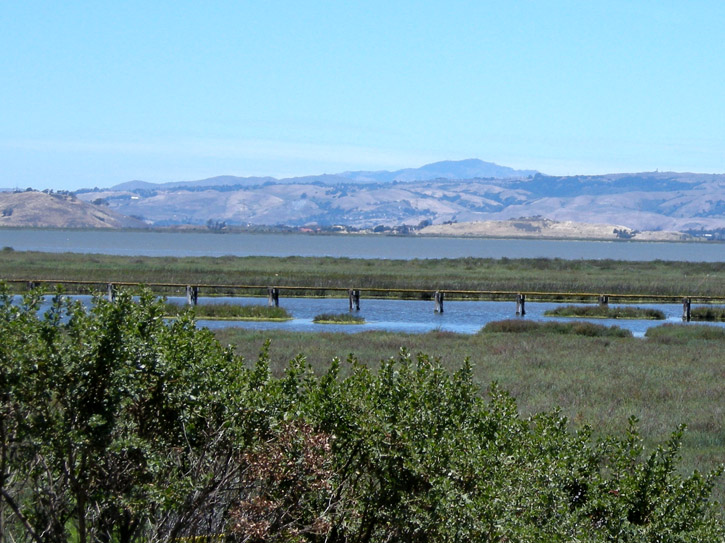
An assemblage of large concrete chunks near the sailing station; since it surely isn't illegally dumped construction debris, I must presume it is a sculpture.
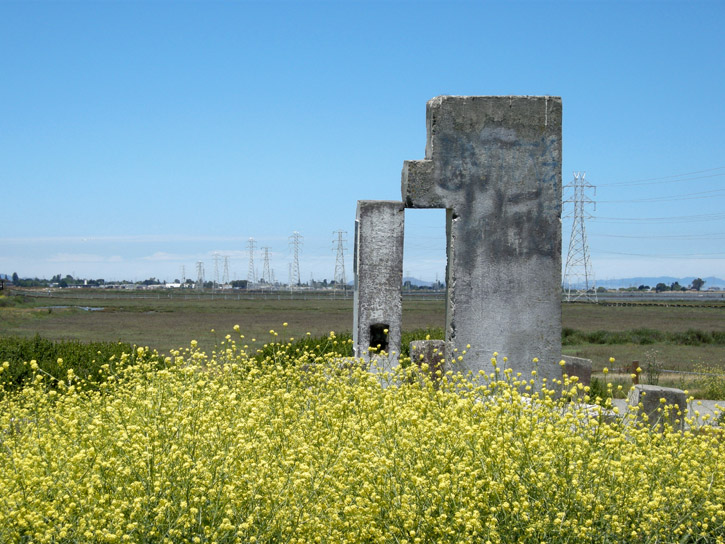
Power lines tower over the mudflats at extreme low tide.
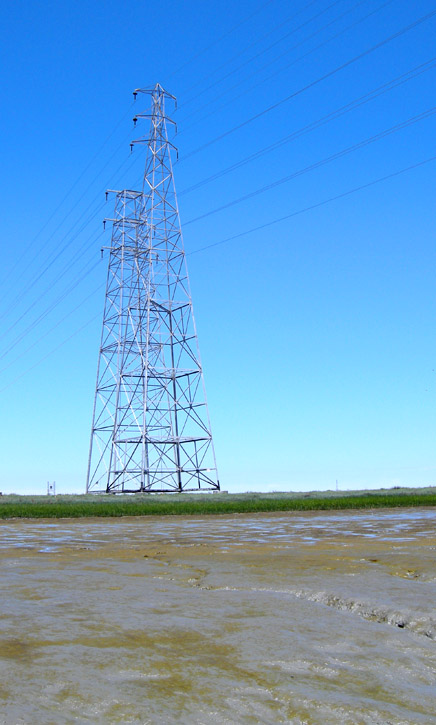
The water at normal low tide usually goes all the way up to the line of green cordgrass, which is almost always submerged to one degree or another, even at low tide. We have never seen so much mud uncovered before.
The slough leading to the open water of the Bay.
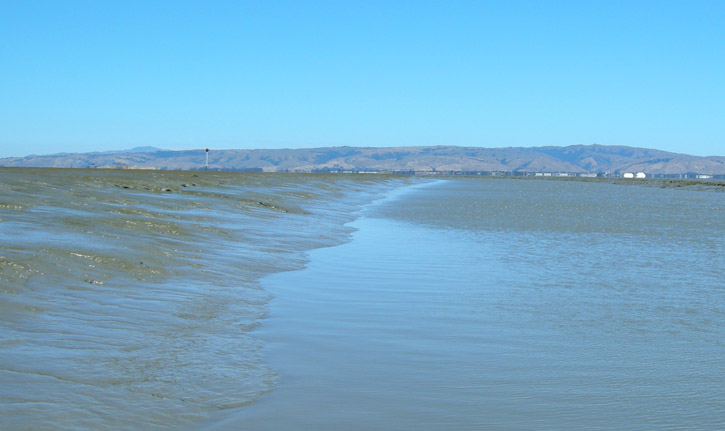
The sailing station dock, where windsurfers, kayakers and sailboarders can launch.
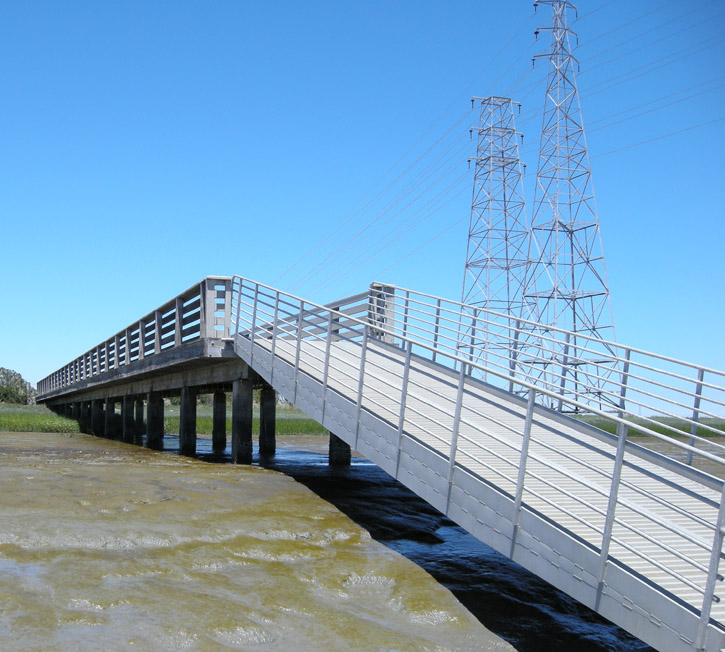
But no one is, because the low tide is so extreme. It is all mud and no water.
The nesting area in the marsh for black-necked stilts and American avocets.
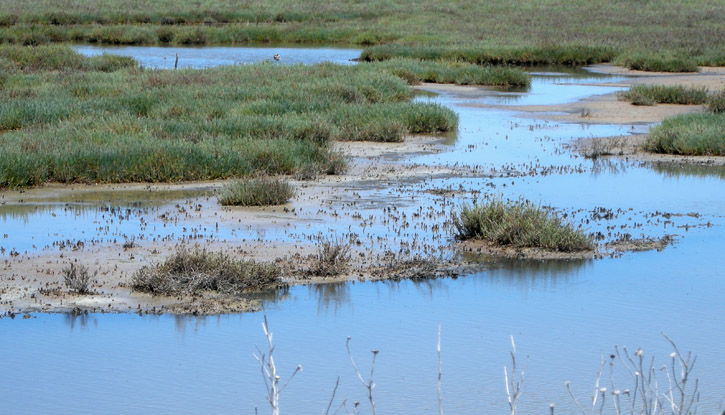
Oh hai! At the preserve's Interpretive Center, the cliff swallows are busy feeding their chicks in their nests all around the building's exterior.
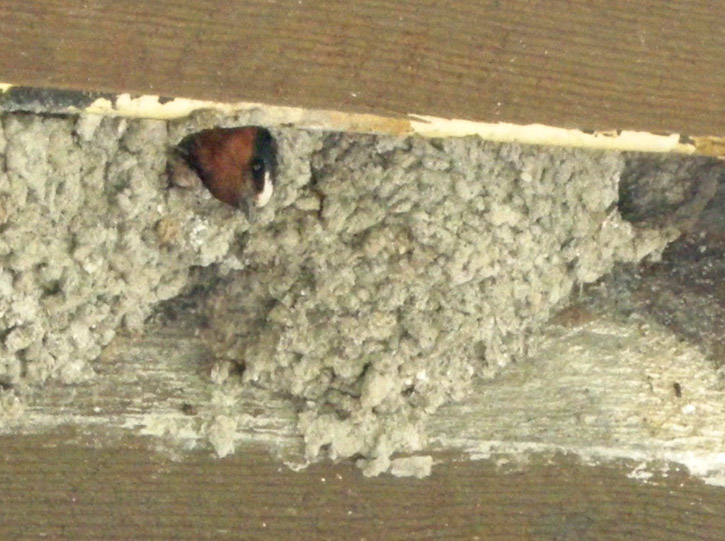
The boardwalk heading out over the marsh to the observation station behind the Interpretive Center has seen better days. It's getting alarmingly rickety in certain spots.
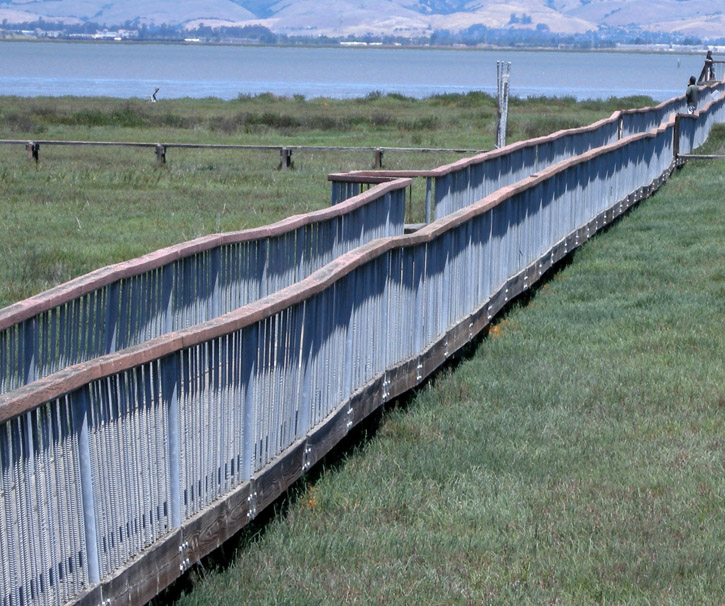
More power lines, striding south through the marsh.
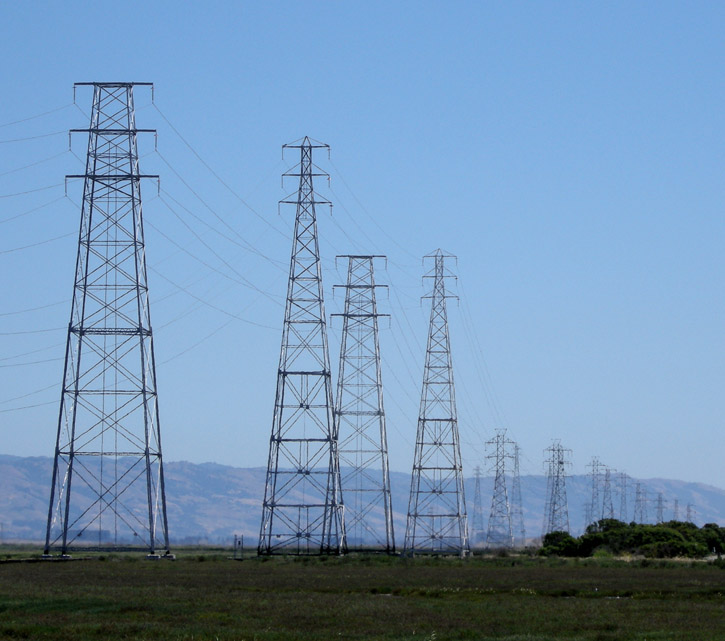
The dark blob near the top of one just above the ridge in the background is a norther harrier nest.
The invasive non-native Eastern mud snail Ilyanassa obsoleta.
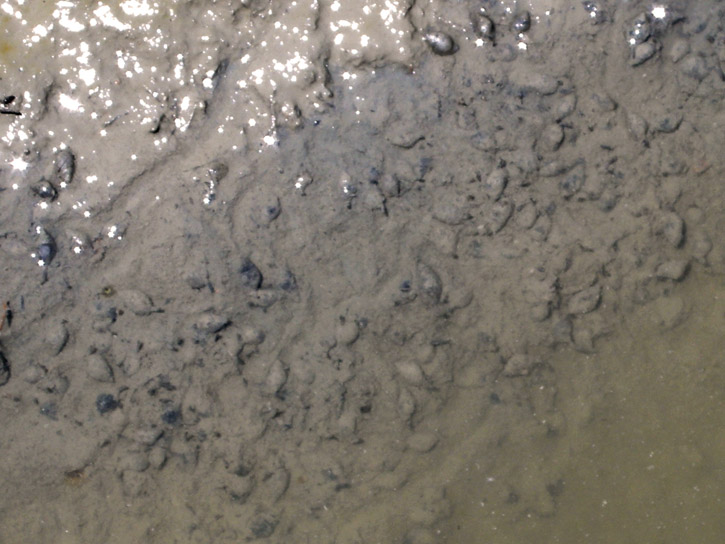
In addition to the two cephalic tentacles that stick out of its head, Ilyanassa also has a proboscis which is a long extensible tube containing the snail's mouth, radula (toothed tongue) and the top of its esophagus; it also has a siphon to bring water to the gill and sensory receptors inside its mantle cavity. The snails we saw were poking their proboscises . . . um, proboscii? . . . wait, um . . . probosces -- yeah, that's it, probosces -- all around in the water, looking for algae, diatoms, tiny worms and bits of dead things on or just under the surface of the mud to eat.
Marbled godwits gather on an exposed mudflat to probe for little critters to eat.
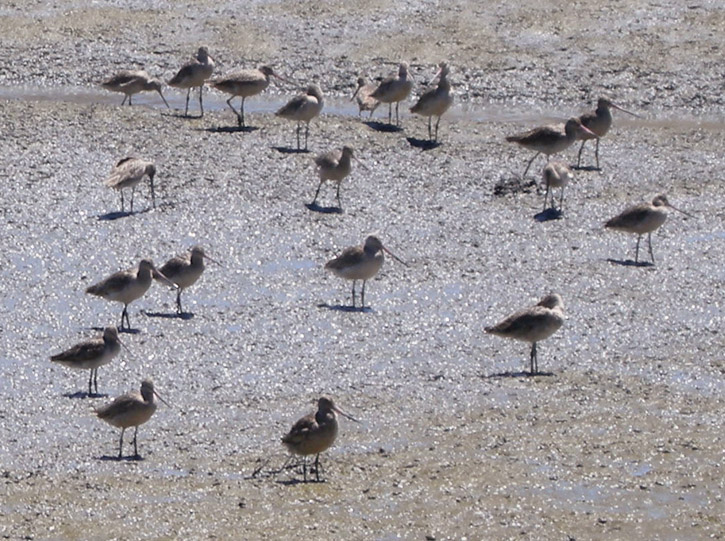
This slough is usually filled with water.
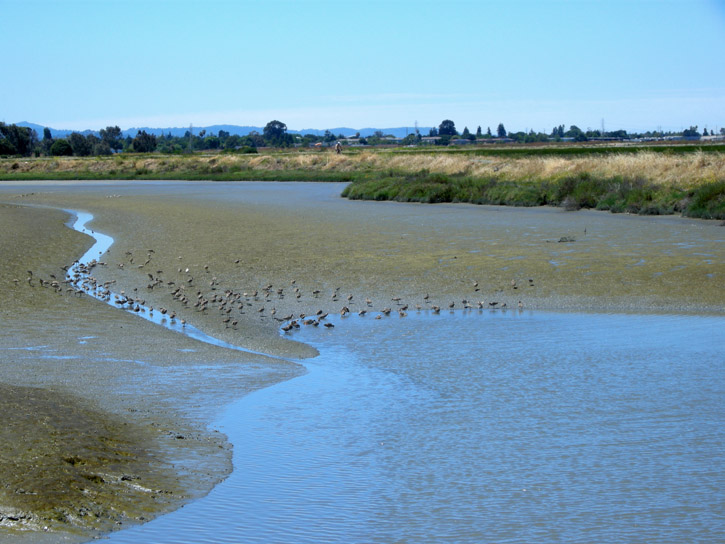
One of the many black-crowned night herons nesting in the trees near the preserve's duck pond.
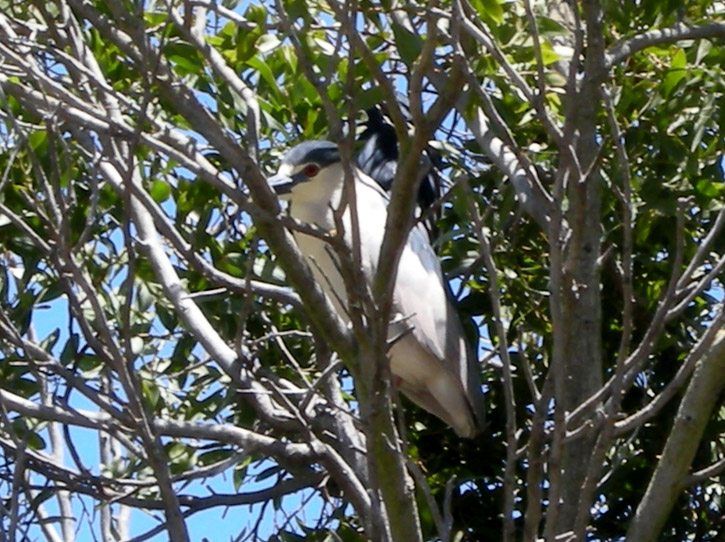
Their plumage is so smooth they almost look carved out of wood.
Ducks nap while seagulls hatch fenceposts at the far end of the duck pond.
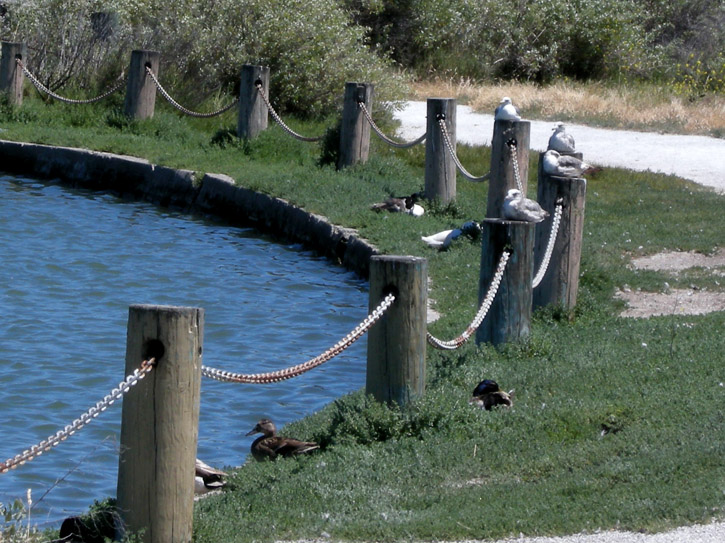
❧ ❧ ❧ ❧ ❧ ❧ ❧ ❧ ❧ ❧ ❧ ❧ ❧ ❧ ❧ ❧ ❧ ❧ ❧ ❧ ❧ ❧ ❧ ❧ ❧ ❧ ❧
And here's D.'s pics.
A black-necked stilt wades through the marsh, hunting for food as we pass by its nesting area.
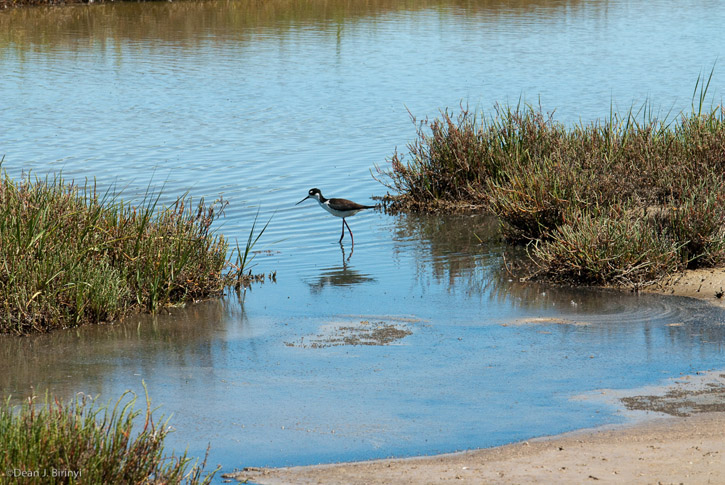
A northern harrier gets mobbed by a flock of swallows, driving it away from their nests.
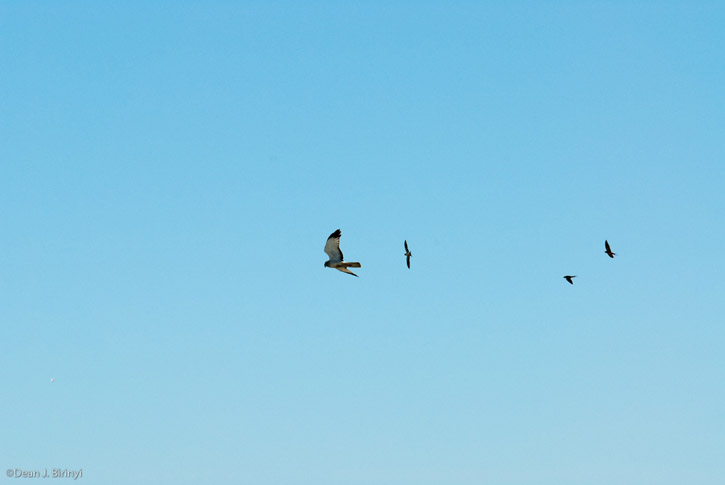
Power lines.

Every other tower was crowned with a shiny metal W.
The tide is so low, the sailing station dock is sitting on the exposed mud.
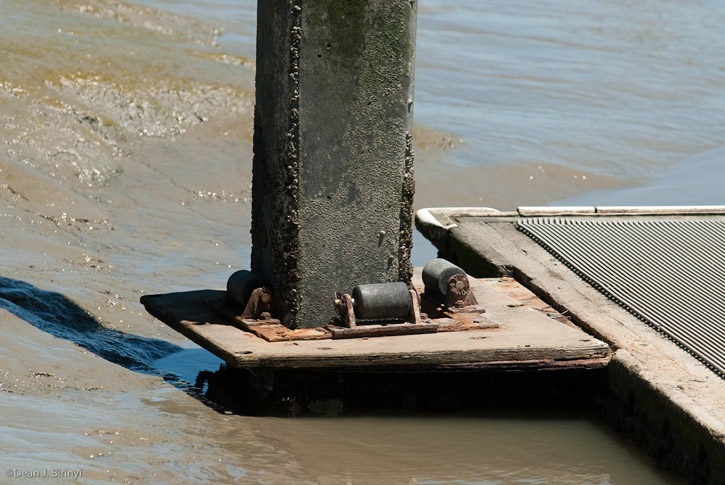
Barnacles, normally under water, are exposed on the dock's pilings.
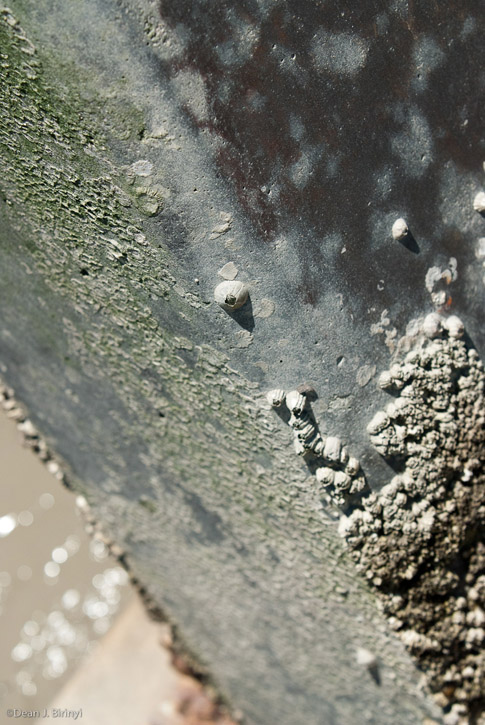
Looking back along the side of the sailing station. Swallows nest among the pilings underneath.
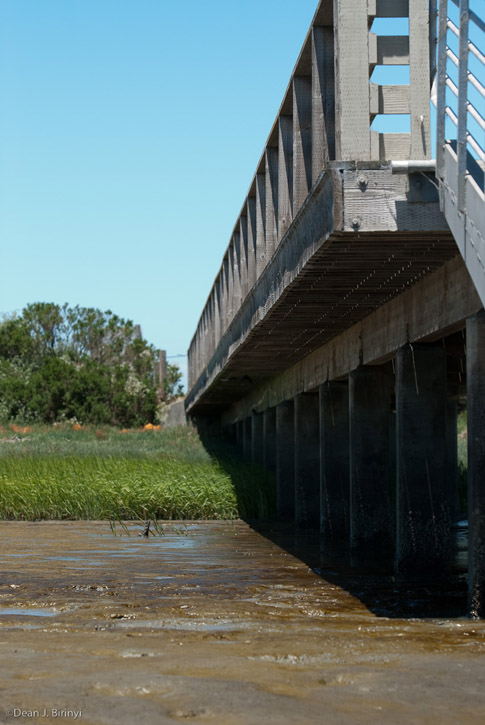
Bird footprints in the mud.
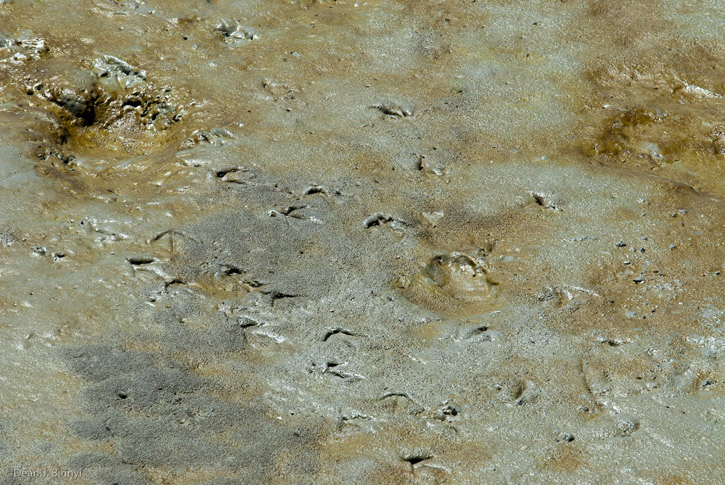
The two curved whitish things are the siphons of bent-nose clams (Macoma nasuta), poking up from the clams' burrows to probe the surface of the mud for food.
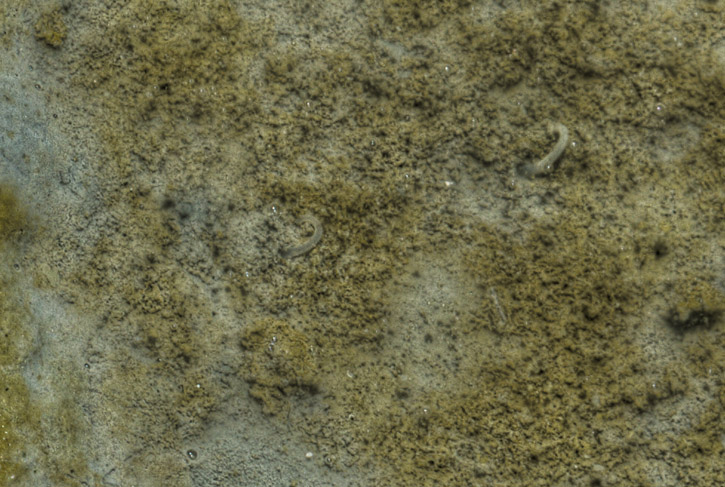
Most clams bury so that they are situated vertically, but the bent-nose clam is oriented horizontally, on its side in the mud. One end is bent upward at an angle to position the siphon aiming toward the surface.
A pair of white pelicans glides past the sailing station.

Another view of the concrete "sculpture."
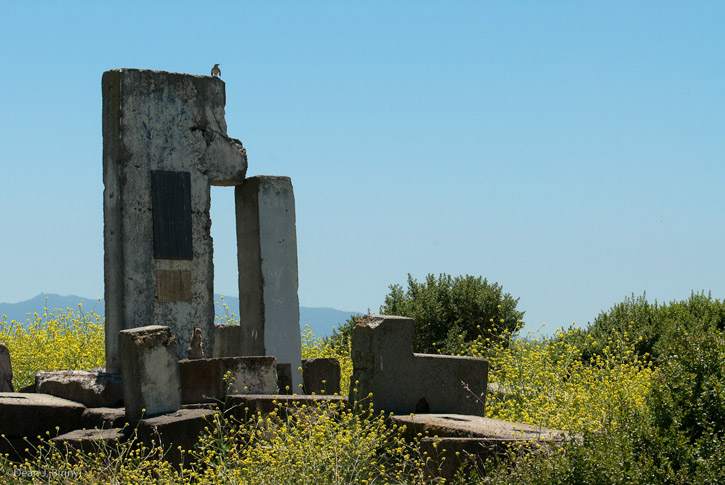
A fluffy little avocet chick scurries across the mud in the nesting area.
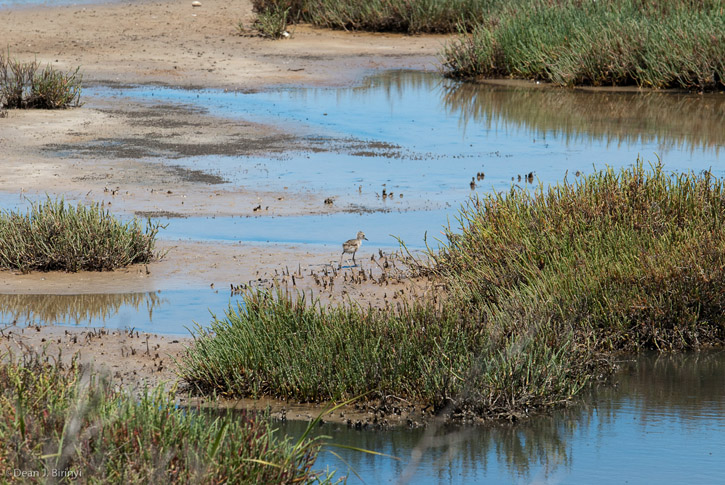
A couple of avocets in the marsh.
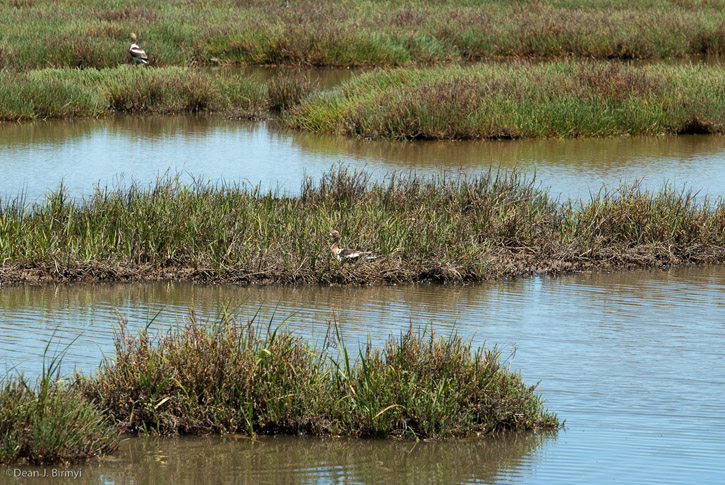
An avocet sits on its nest in the marsh (head pointing to the right, partially obscured in the pickleweed).
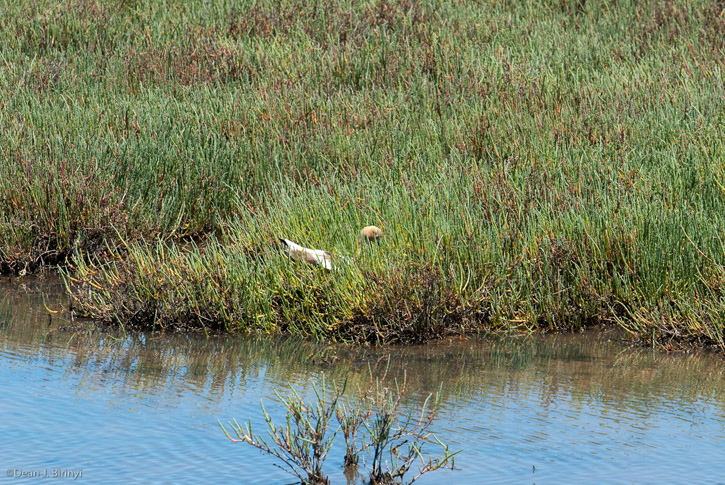
Its mate chooses this moment to dive-bomb us, protecting its territory.
Wildlife has the right of way here.
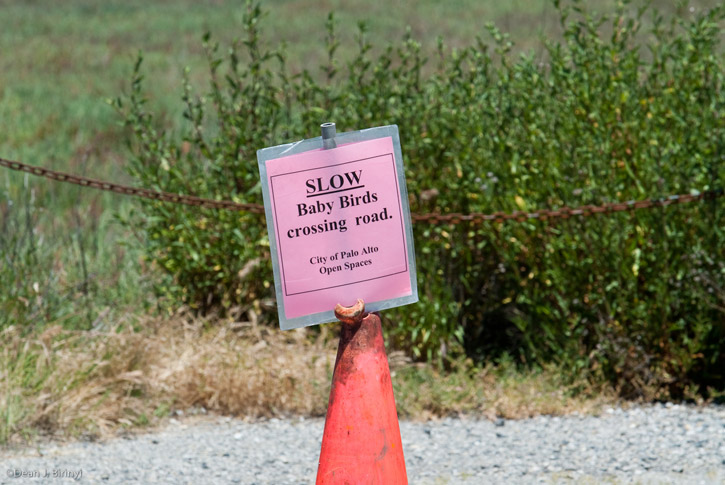
It is illegal to trespass in the nesting area of the marsh. You will get cited if you're caught!
A lone ruddy duck in the slough looks kind of lost.
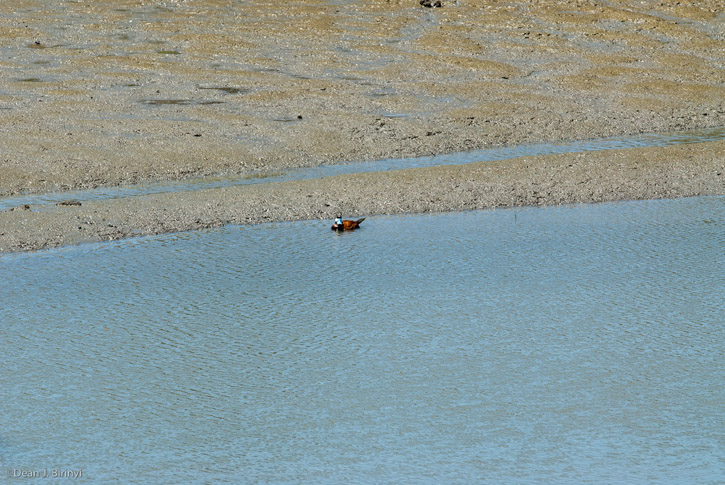
His bright cinnamon red color is his breeding plumage. It doesn't seem to be doing him a whole lot of good, though.
Another cliff swallow nest above the entrance to the preserve's Interpretive Center.
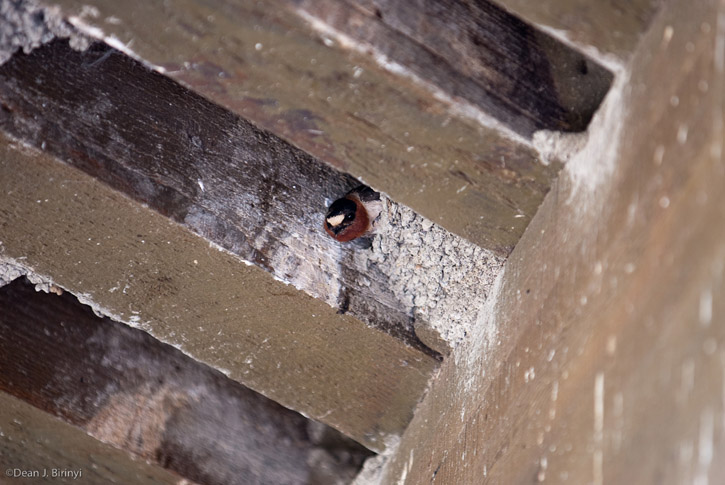
The benches below cannot be used during nesting season, due to copious guano.
Another look at the mud snails.

Pipes connect the slough as the road passes over it.
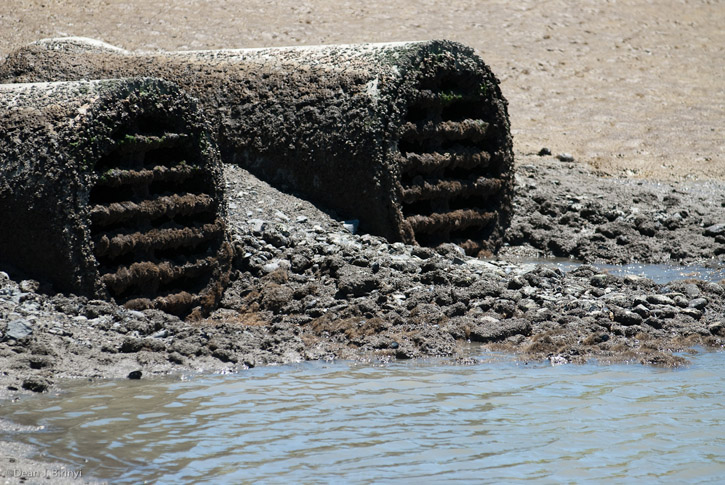
They are usually always under water, so they look really gnarly uncovered, encrusted with mud, algae and barnacles.
Marbled godwits massing on the mudflats to feed.
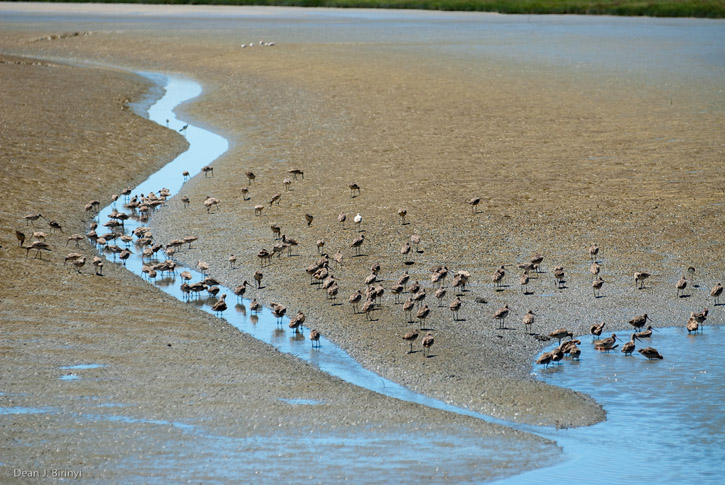
Western tiger swallowtail on what looks like statice.
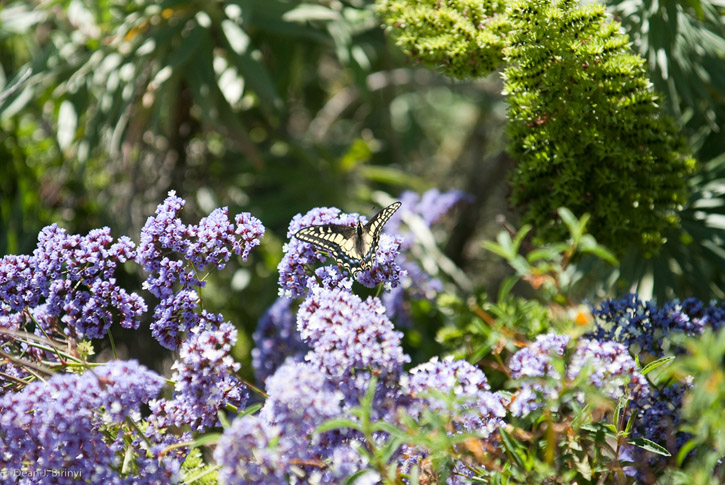
Black-crowned night herons are nesting now in the trees near the preserve's duck pond.
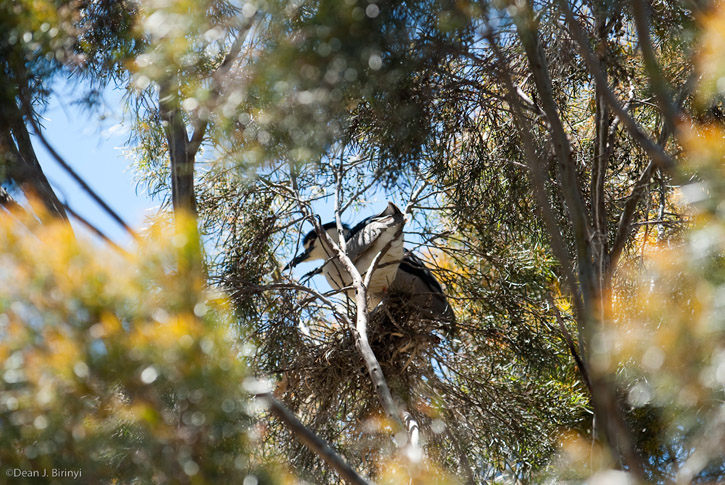
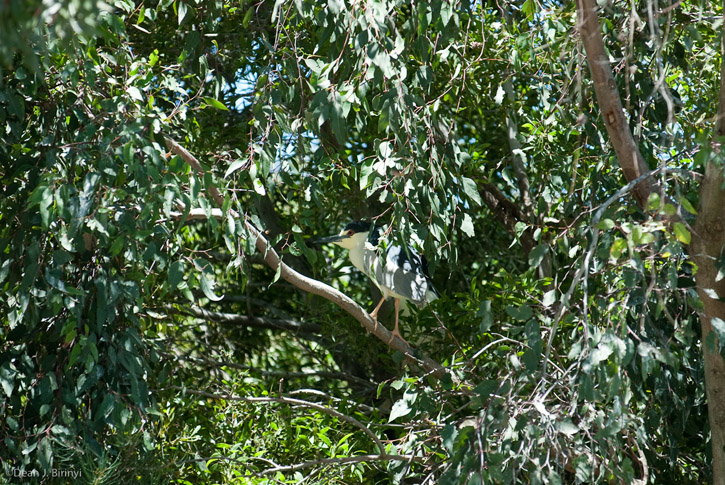
They have really intense red eyes and make a godawful noisy squawking racket courting each other.
A great egret hunts in the field next to the slough.
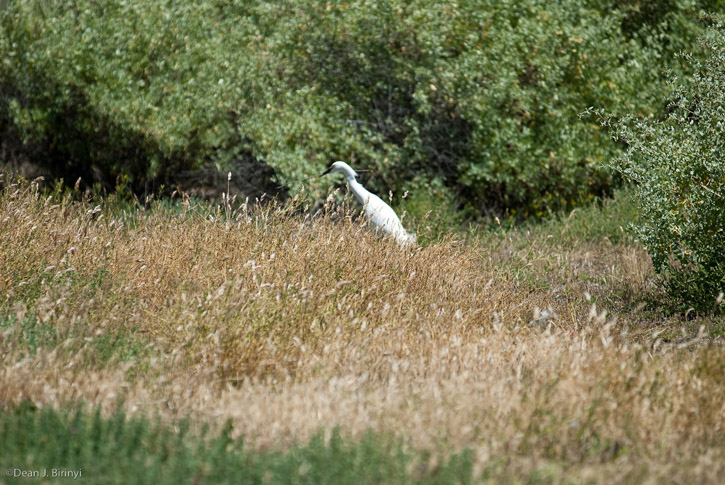
Some of the very few daisies still in bloom now at the preserve.

.
On Saturday D. and I went to the Baylands Nature Preserve in Palo Alto to enjoy the warm sunny day. We both took some pics. Mine first.
Looking east across the marshes and San Francisco Bay to the lump on the horizon called Mt. Diablo.

An assemblage of large concrete chunks near the sailing station; since it surely isn't illegally dumped construction debris, I must presume it is a sculpture.

Power lines tower over the mudflats at extreme low tide.

The water at normal low tide usually goes all the way up to the line of green cordgrass, which is almost always submerged to one degree or another, even at low tide. We have never seen so much mud uncovered before.
The slough leading to the open water of the Bay.

The sailing station dock, where windsurfers, kayakers and sailboarders can launch.

But no one is, because the low tide is so extreme. It is all mud and no water.
The nesting area in the marsh for black-necked stilts and American avocets.

Oh hai! At the preserve's Interpretive Center, the cliff swallows are busy feeding their chicks in their nests all around the building's exterior.

The boardwalk heading out over the marsh to the observation station behind the Interpretive Center has seen better days. It's getting alarmingly rickety in certain spots.

More power lines, striding south through the marsh.

The dark blob near the top of one just above the ridge in the background is a norther harrier nest.
The invasive non-native Eastern mud snail Ilyanassa obsoleta.

In addition to the two cephalic tentacles that stick out of its head, Ilyanassa also has a proboscis which is a long extensible tube containing the snail's mouth, radula (toothed tongue) and the top of its esophagus; it also has a siphon to bring water to the gill and sensory receptors inside its mantle cavity. The snails we saw were poking their proboscises . . . um, proboscii? . . . wait, um . . . probosces -- yeah, that's it, probosces -- all around in the water, looking for algae, diatoms, tiny worms and bits of dead things on or just under the surface of the mud to eat.
Marbled godwits gather on an exposed mudflat to probe for little critters to eat.

This slough is usually filled with water.

One of the many black-crowned night herons nesting in the trees near the preserve's duck pond.

Their plumage is so smooth they almost look carved out of wood.
Ducks nap while seagulls hatch fenceposts at the far end of the duck pond.

❧ ❧ ❧ ❧ ❧ ❧ ❧ ❧ ❧ ❧ ❧ ❧ ❧ ❧ ❧ ❧ ❧ ❧ ❧ ❧ ❧ ❧ ❧ ❧ ❧ ❧ ❧
And here's D.'s pics.
A black-necked stilt wades through the marsh, hunting for food as we pass by its nesting area.

A northern harrier gets mobbed by a flock of swallows, driving it away from their nests.

Power lines.

Every other tower was crowned with a shiny metal W.
The tide is so low, the sailing station dock is sitting on the exposed mud.

Barnacles, normally under water, are exposed on the dock's pilings.

Looking back along the side of the sailing station. Swallows nest among the pilings underneath.

Bird footprints in the mud.

The two curved whitish things are the siphons of bent-nose clams (Macoma nasuta), poking up from the clams' burrows to probe the surface of the mud for food.

Most clams bury so that they are situated vertically, but the bent-nose clam is oriented horizontally, on its side in the mud. One end is bent upward at an angle to position the siphon aiming toward the surface.
A pair of white pelicans glides past the sailing station.

Another view of the concrete "sculpture."

A fluffy little avocet chick scurries across the mud in the nesting area.

A couple of avocets in the marsh.

An avocet sits on its nest in the marsh (head pointing to the right, partially obscured in the pickleweed).

Its mate chooses this moment to dive-bomb us, protecting its territory.
Wildlife has the right of way here.

It is illegal to trespass in the nesting area of the marsh. You will get cited if you're caught!

A lone ruddy duck in the slough looks kind of lost.

His bright cinnamon red color is his breeding plumage. It doesn't seem to be doing him a whole lot of good, though.

Another cliff swallow nest above the entrance to the preserve's Interpretive Center.

The benches below cannot be used during nesting season, due to copious guano.
Another look at the mud snails.

Pipes connect the slough as the road passes over it.

They are usually always under water, so they look really gnarly uncovered, encrusted with mud, algae and barnacles.
Marbled godwits massing on the mudflats to feed.

Western tiger swallowtail on what looks like statice.

Black-crowned night herons are nesting now in the trees near the preserve's duck pond.


They have really intense red eyes and make a godawful noisy squawking racket courting each other.
A great egret hunts in the field next to the slough.

Some of the very few daisies still in bloom now at the preserve.

.